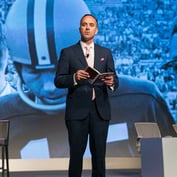Lawyers for Maurice “Hank” Greenberg, former chairman and CEO of American International Group (AIG), argue in a court filing that the Federal Reserve Bank did not have unlimited powers when it moved to aid AIG in late 2008 and that some of its actions breached its duty to AIG shareholders.
The filing was in response to a filing by the Federal Reserve Bank of New York (FRBNY) in April, a lawsuit Greenberg, individually and as a shareholder of what was then an AIG subsidiary, Starr International, filed last November against the Fed.
The suit was filed in Federal District Court in Manhattan.
Greenberg has also filed suit in the Federal Court of Claims in Washington against the Treasury Department on similar grounds.
In the latest response, filed Friday, lawyers for Greenberg contend that the FRBNY is wrong in claiming that it has immunity from claims incurred in all of its actions regarding AIG.
“In sum, there is no basis for dismissing this case at this preliminary stage, and FRBNY’s motion should be denied,” the Greenberg response said.
The suit contends the FRBNY breached its fiduciary duty to AIG shareholders “when it caused AIG to take actions which helped third parties and furthered FRBNY’s goals unrelated to FRBNY’s core statutory purpose: lending.”
The answer by Greenberg’s lawyers says that the FRBNY is wrong in contending that because it lent and exercised control as part of a rescue operation, “it was freed of any duty whatsoever to the loan-receiving entity or its common stock shareholders.”
The answer by Greenberg lawyers says that the FRBNY contends that all fiduciary duties are preempted, and appears to contend that it is also subject to no constitutional constraints.








 June 04, 2012 at 10:51 AM
June 04, 2012 at 10:51 AM









